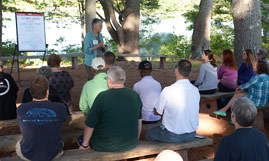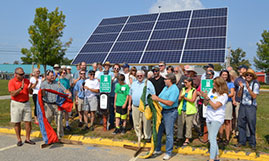Sustainable Forest Lands
In 2021, the growth-to-removal ratio rose 8% to 1.43 and remained above the sustainability goal.
No significant movement since the last available data
Benchmark: A net growth-to-removal ratio of approximately 1:1 will be maintained over time.
Overview
The sustainable management of Maine’s forests is measured by the growth-to-removal ratio. A net growth value above one means growth exceeds removals, and a value below one means removals exceed growth. Forests cover nearly 90% of Maine’s land area. Private entities and individuals own 92% of forested acreage, with much of it accessible to the public. Forests provide habitat for wildlife, help protect air and water quality, offer recreational opportunities, and supply raw materials for products ranging from paper to building materials to alternative fuels.
Sustainable forestry supports Maine’s economy, environment, and quality of life, and well-planned forest management activities can help address issues related to forest health, climate change, and other factors affecting forest conditions. Since 2010, Maine has seen slightly more growth than removals. In 2021, the growth-to-removal ratio rose 8% to 1.43.
Fig. A
On mobile? Viewing this data is easier at a computer.
Timberland Growth-to-Removal Ratio
Maine Department of Agriculture, Conservation, and Forestry







